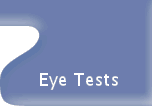
|
Labrador Health |

 |
|
 |
Eye Test Information (by John Weller)
Here, John Weller gives a background to canine eye testing, and then covers Labradors more specifically, outlining the five genetic conditions that affect the breed. At the end, Diana Stevens provides a statement outlining a brief overview of the eye test process and gives her thoughts on the need for dogs to be tested
Background
In the late 1940’s breeders of Irish Setters realised they had big problems. Dogs were going blind! The numbers were increasing and the future of the Irish setter looked bleak. Then someone noticed that for some time before the dogs actually went blind there were little signs. Although fine during the day the dogs seemed to have increasing difficulties as evening drew on and it started to get dark. The dogs were suffering from a progressive form of Night Blindness! Something had to be done, and done fast. The Irish Setter club got in touch with the British Veterinary Association, who devised a simple test. Run the dogs down a darkened corridor and if they had problems dealing with it then don’t breed from them! So simple, but largely as a result of that simple test there is almost no night blindness in Irish setters now! That was the start of canine eye testing. A little later the International Sheepdog Society contacted the BVA for help over the mounting problem of an eye disease known as “Collie Eye Anomaly” and a routine testing scheme, known as the BVA/ISDS scheme was established. Over time, more hereditary eye problems were diagnosed, more breed clubs became involved, and the KC/BVA/ISDS eye testing scheme as we now know it became established.Things have come a long way from those early beginnings. We now have a list of conditions which affect individual breeds, in fact, to be accurate we have two lists. What is called Schedule A is a list of inherited diseases known to affect that breed, and Schedule B which are diseases which, although not known to affect a breed, have been found in small numbers. For simplicity, “Schedule A” of often simply called “The List” whilst “Schedule B” is known by the more descriptive name of “Conditions under Investigation” which very much sums up what it is. Sometimes an eye disease appears in a breed where in the past it has not been known. The BVA will make a note of it and if a few more cases are found then the disease will be listed on Schedule B, under investigation. At this point the ophthalmologists examining the dogs will be instructed to keep an eye open for it and report any cases found. After a time it will become apparent whether the dogs originally found were just an odd blip, and the condition can safely be removed from Schedule B, or whether the dogs found had been just the tip of the iceberg in which case the disease will be moved to Schedule A.
Conditions Affecting Labradors
Getting back to Labradors, they are on the “List” for five hereditary diseases, Centralised Progressive Retinal Atrophy, Generalised Progressive Retinal Atrophy, Multi-focal Retinal Dysplasia, Total Retinal Dysplasia and Hereditary Cataracts. Add to these five conditions there is one disease, Abnormal Pigment Deposition which is Under Investigation. In other words, it may or may not eventually make its way onto the Schedule A list.So lets look at these conditions.
Generalised Progressive Retinal Atrophy
Sometimes known as Progressive Rod-Cone Degeneration, is what we are talking about when talking of PRA. In Labradors it is a relatively late forming disease, first appearing at around three years of age, with total blindness following by around six years of age. This is probably the most serious eye disease in Labradors.Centralised Progressive Retinal Atrophy
More correctly called Retinal Pigment Epithelial Dystrophy, it is nothing at all to do with PRA. In fact it is an ocular manifestation of a metabolic defect and recognised early it can be controlled with a vitamin supplement.Multi-focal Retinal Dysplasia
Better known as MRD or Retinal Folds it is where areas of the retina are not attached and may appear like folds or patches. One of the problems with this is that as the eye develops the pattern may change, or even seem to go away. This has in the past caused arguments in cases where a dog has failed an eye test but has later passed! Make no mistake. The dogs still has MRD! To date, no dog has actually gone blind from MRD, but in reading this, please read the section below on Total Retinal Dysplasia.Total Retinal Dysplasia
This is not a single condition in Labradors, in fact there are two forms, although from a breeder’s point of view they can be looked upon as the same thing. The puppy is totally blind form birth, or shortly after. As a worrying trend, we are seeing a few puppies, born to parents with MRD who are blind, suffering from Total Retinal Dysplasia! Is this a natural extension of MRD? Time will tell.Hereditary Cataracts
When talking about cataracts people think of a milky white film over the eyes, but Hereditary Cataracts are not like that. They are totally unmistakeable, with no chance of them being confused with any other form of cataract. Hereditary Cataracts are almost invariably bi-lateral, meaning that both eyes are normally affected. The good news though is that although there would be a restricted vision, the dog would almost never go blind. There are two kinds which affect Labradors. The most common being late forming, often not seen until nearly 8 years old. The other is early forming, generally present by a year or so old.Testing
The KC/BVA/ISDS examining ophthalmologists are all specialist in their field. Testing is carried out at their practises, but testing sessions are also organised from time to time by Breed Clubs, often in conjunction with their Open Shows. Some of the larger Game Fairs also host a session and some private individuals and training clubs hire a hall and book an ophthalmologist to test for them as a service to the local breeders.The test is a very simple visual inspection of the mechanics of the eye. First, eye drops are put into both eyes to dilate the pupils. These take something like 20 minutes to take effect. The dog is then taken into a darkened room for the examination. The Ophthalmologist uses a light to look into the eye, normally using a loupe to magnify the back of the eye, and can immediately tell you the result. From the time the dog goes into the darkened room the test lasts for no more than about 5 minutes.
As I said earlier, Hereditary Cataracts can take up to 8 years before appearing, so for this reason it is important to test EVERY YEAR, at least until after the last chance of these developing. Testing just once is simply not good enough.
John Weller 2007
Sample Eye Certificates (click on the images to see a larger version)
Diana Stevens (Wylanbriar Labradors), says of the eye test:
This is possibly even more essential for buyers of puppies to ensure they buy only from litters where both parents have been eye tested. GPRA is 100% genetic and so the status of the parents eyes entirely affects the puppies eyes for the future. This test is not undertaken at a regular vet but by a specialist. There are many many clinics and testing sessions around the country OR you can book a private visit to one of the dozens of test specialists. An eye test will be undertaken and a simple certificate given afterwards showing if the dog was affected or unaffected by the problems being examined for. This eye certificate should be renewed every 12 months and so, when puppies are produced, the certificate should be valid. they last only 12 months, like a Car M.O.T. so even if the breeder can show a certificate, firstly make sure the 'unaffected' box is ticked (not the 'affected') and secondly make sure it is dated within the last 12 months. If it is not, chances are the dog was retested and failed OR the owner didn't bother testing again.
The trauma of a young pet dog going blind is so great that the £30.13 + VAT (2007) for an eye test certificate is a SMALL price to pay to check their eyes are not affected before a mating is undertaken.
Visit the BVA website to find out more about Canine Eye Schemes
Home | About LH | Labradors | Charlie's Story | Buying a Puppy | What Tests? | Your Stories | Survey | Guestbook | Links